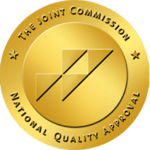Can Alcohol Withdrawal Cause Seizures?
Seizures from alcohol withdrawal are a real possibility. If you suddenly stop consuming alcohol after long-term heavy drinking it may trigger withdrawal seizures. It has been estimated that 2 million Americans go through the symptoms of alcohol withdrawal every year.
The most common and severe type of seizure that happens is called tonic-clonic seizures. These are also referred to as convulsions. Generalized tonic-clonic seizures are the most serious and dramatic feature of alcohol withdrawal syndrome (AWS). Nearly one-third of all people with significant alcohol withdrawal will experience alcohol withdrawal seizures.
What is an Alcohol Withdrawal Seizure Like?
What most people imagine when they hear the word “seizure” is the tonic-clonic seizure. These seizures used to be known as “grand mal” but that term is not used anymore. “Tonic” in the name means stiffening, and “clonic” means rhythmic jerking of the body. These seizures typically occur within 48 hours of your last drink but may happen at any time during the first week of abstinence.
Experiencing a Tonic-Clonic Seizure:
The tonic phase sets in first:
Typically, this type of seizure begins on both sides of the brain, but it may start on one side of the brain and spread throughout. All of your muscles become stiff. Air is forced through your vocal cords causing a cry or groaning sound.
You will lose consciousness and fall. You may unintentionally bite your tongue or the inside of your cheek. This can cause your saliva to appear bloody.
The clonic phase follows the tonic phase:
At this time, your arms and usually also your legs begin to jerk rapidly and rhythmically, bending at the elbows, hips, and knees. After a few minutes, the jerking movements slow down and stop. If the seizure goes on too long, your face may turn a bit blue or darkish if you’re having trouble breathing.
You may lose control of your bowels and bladder as your body begins to relax. Your awareness of your surroundings or consciousness returns slowly. A tonic-clonic seizure usually lasts 1 to 3 minutes but often takes longer to recover. You may feel confused, sleepy, irritable, or depressed after it stops.
If it lasts more than 5 minutes, it requires immediate medical help. If it lasts more than 5 minutes or there are 3 seizures consecutively without becoming conscious in between, you need medical help. This is a dangerous condition called “status epilepticus” which requires immediate hospital emergency treatment.
Why Does Alcohol Withdrawal Cause Seizures?
Advances in the understanding of the short- and long-term effects of alcohol on the central nervous system have presented new insights into the physical processes of injury or disease. In this case, alcohol inhibits NMDA neuroreceptors. The process goes like this:
It begins with neurotransmitters. A neurotransmitter is a chemical “messenger” that your body can’t function without. They carry chemical signals from one nerve cell to the next target cell.
Neuroreceptors on the nerve cells process and transfer the information from the neurotransmitters.
Alcohol obstructs the NMDA receptors which have an important role in regulating:
- Formation of memories
- Breathing
- Learning
- Mobility
By suddenly stopping the brain’s exposure to alcohol, your brain is easily triggered into a state of irritability or brain hyperexcitability. This is because the receptors that were being obstructed by alcohol no longer are. Brain hyperexcitability displays itself such as:
- Agitation
- Irritability
- Tremors
- Anxiety
- Severe brain hyperexcitability appears as:
- Delirium tremens (DTs)
- Alcohol withdrawal seizures
How Long After Quitting Can Alcohol Withdrawal Cause a Seizure?
If you are going to have a seizure from alcohol withdrawal, it will generally begin about 3 to 5 days after your last drink. If you experience a seizure from alcohol withdrawal, there is a higher likelihood that you will develop DTs (delirium tremens).

What Are Delirium Tremens?
DTs are considered the worst part of the withdrawal process. It is a severe type of withdrawal from alcohol and usually starts about 2 to 3 days after someone who is alcohol dependent ends a long drinking binge. DTs also usually last for 2 to 3 days, however, the symptoms may extend for as long as a week.
What Causes DTs?
Because alcohol is a depressant, it slows your brain and nervous system. If you suddenly stop drinking after a long period of use, your nervous system and brain aren’t able to quickly adjust. This causes your brain to become overstimulated.
Individuals with alcohol use disorder (AUD) may also have a spike in an amino acid (glutamate) that causes some of the symptoms common in DTs like sudden high blood pressure, tremors, and seizures.
Symptoms of DTs include:
- Uncontrollable tremors
- Severe and sudden changes in your mental or nervous system
- Extreme confusion and hallucinations
- Heightened blood pressure
- Fever and heavy sweating
- Nausea or vomiting
- Dehydration
- Deep sleep lasting for a day or longer
- Easily startled
- Seizures
- Irregular or racing heartbeat
- Coma or death
Delirium Tremens is most common in:
- Adult men (mainly white, younger, and unmarried)
- Individuals with a history of seizures
- People who have previously gone through alcohol withdrawal
- Long-term and heavy or long-time drinkers
What is “Heavy Drinking?”
- For women, 8 or more drinks per week are heavy drinking.
- For men, it’s 15 per week.
- A “drink” is:
- 12 oz. beer
- 7 oz. malt liquor
- 5 oz. wine
- 1.5 oz of 80-proof distilled spirits or liquor
Can Alcohol Dehydration Cause Seizures?
Dehydration can happen to anyone, but some people are more susceptible including people who drink alcohol. Consuming alcohol decreases vasopressin (a natural anti-diuretic in your blood). This can cause increased urination.
Without the water needed for your bodily functions, you are at risk for dehydration. Mild dehydration might not cause symptoms, but severe dehydration can cause electrolyte imbalances that can be life-threatening.
- Mild dehydration–this is the loss of 5-6% of your body fluids. You may experience symptoms such as:
- Dizziness
- Headache
- Fatigue
- Dry mouth
You can rehydrate by drinking some water or an electrolyte drink like a sports drink.
- Moderate dehydration–this is the loss of 7-10% of your body fluids. Symptoms include:
- Drop in blood pressure
- Pulse increases
- Skin becomes dry
- Decrease in urination amount and frequency
At this point, you need rehydration and electrolyte replacement quickly. Water is fine if there is no electrolyte replacement fluid available.
- Severe hydration–loss of more than 10% of your fluids is a severe situation. Symptoms include:
- Dizziness
- Fainting
- Seizures (due to low electrolytes)
In this case, you will need IV hydration and electrolyte replacement. It can be life-threatening if fluid loss reaches 15% or more.
Signs of Dehydration
- Thirst
- Dark urine (urinating less often and /or in smaller amounts)
- Feeling lightheaded, lethargic, or tired
- Dry skin, mouth, or nasal passages and thick mucus
- Sunken eyes
- Muscle cramps, headaches, irritability
- Skin “tenting” (skin retains tent shape after you pinch and let go)
- Swollen feet–Blood vessels narrow from dehydration which forces fluids into spaces between the cells. This causes fluid retention, particularly in the lower legs and feet.
Why Do I Shake After Drinking?
The shaky feeling you have after drinking has a name–” hangover shakes.” A lot of people have shakes and tremors when they’re hungover, but they aren’t likely to be the same for each person. You may have shakes mainly in your hands or fingers. You may feel them all over your body. Some people report hangover shakes in their arms, eyes, head, and voice.
Many people link hangover shakes with AWS because the shakes may be the result of the same changes in your nervous system that add to withdrawal-related tremors. Why it happens involves those neurotransmitters and receptors discussed earlier.
When you consume alcohol, your body reacts by decreasing the amount of sensitivity of receptors that bind to the neurotransmitter GABA. At the same time, it increases the number or sensitivity of receptors that attach to the glutamate neurotransmitter. This is an attempt to counter the sedative effects of alcohol.
As the alcohol leaves your body over time, your central nervous system, and a part of your sympathetic nervous system, stay unbalanced. Your sympathetic nervous system is a network of nerves that helps your body activate its “fight-or-flight” response. It reacts to stress with sweating, increased heart rate, and hangover shakes or tremors.
Low Blood Sugar
Alcohol also has an impact on your body’s ability to monitor blood sugar levels. When your blood sugar gets low, it can cause shaking as well as other hangover symptoms, like headaches and sweating.
How Long Do the Shakes Last?
The timespan may also vary among people, depending on how much alcohol you consumed and your body composition. Still, they usually don’t last longer than a day or two. If you’re a frequent drinker, you might experience more frequent hangover shakes.
When to Worry?
If you’re worried that your shakes and tremors might be the result of withdrawal, or they last longer than 24 hours, it’s best to contact a healthcare professional. Although you can probably handle alcohol withdrawal syndrome on your own, it can be very uncomfortable and unpleasant. Also, sometimes it can include more severe symptoms like mental confusion, seizures, or hallucinations.
Finding the Best Treatment for Alcohol Use Disorder
If you or someone you care about is struggling with addiction, there is experienced, professional help at Westwind Recovery® Center. Because of our knowledge and commitment, we were named “Best Los Angeles Treatment Center” in 2020 and 2021. We’re talking about someone’s future here, and it shouldn’t be left in the hands of anyone but the best.
At Westwind, we can provide several levels of care, so you can get the treatment you need when you need it. Our treatment programs include:
- Medically supervised detox center
- Inpatient Treatment for Substance Abuse
- Partial Hospitalization Program (PHP)
- Intensive Outpatient Program (IOP)
- Outpatient Program (OP)
- Sober Living Homes
To further individualize your treatment we can provide specialized programs to address members of the LGBTQ community, a concierge service, and a virtual IOP for people who require professional treatment in their homes.
Contact us today and find out what Westwind can do for you. Our compassionate capable staff is available to answer your questions and help you on your way to a substance-free life.

Dr. Deena is the Chief Clinical Officer of Westwind Recovery®, an award-winning outpatient treatment center in Los Angeles where she oversees the clinical and administrative program and treatment methods. Dr. Deena is a doctor of psychology and licensed clinical social worker since 1993. LCSW #20628. Originally from the East Coast, Dr. Deena has worked running treatment centers, worked as a therapist in psychiatric hospitals as well as school settings and currently has a thriving private practice in the LA area. Dr. Deena has appeared regularly on the Dr. Phil Show as an expert since 2003. She has also been featured on many other TV shows, podcasts and has contributed to written publications as well as podcasts.




